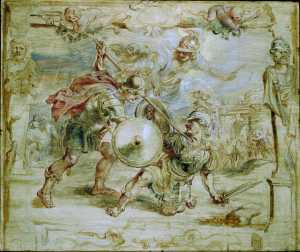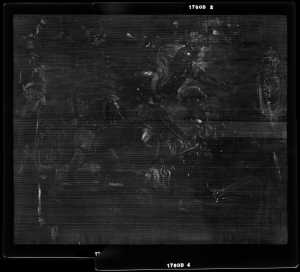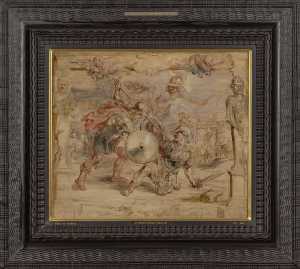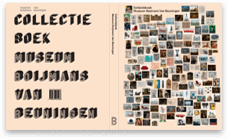Once Achilles had received new weapons from the fire god Vulcan, he threw himself into battle to revenge his best friend Patrocles. Ultimately he fights Hector. With the help of the goddess Minerva, he manages to beat him, as can be seen in this oil sketch by Rubens, the sixth in a series of eight, in which he illustrated the life of Achilles. The statues to the left and right are of Hercules and Mars. Hercules was the first to plunder Troy and Mars was the protector of Troy, but here turns his face from it.
Specifications
| Title | The Death of Hector |
|---|---|
| Material and technique | Oil on panel |
| Object type |
Painting
> Painting
> Two-dimensional object
> Art object
|
| Location | This object is in storage |
| Dimensions |
Height 44,4 cm Width 53 cm |
|---|---|
| Artists |
Painter:
Peter Paul Rubens
|
| Accession number | 1760 d (OK) |
| Credits | Gift D.G. van Beuningen, 1933 |
| Department | Old Masters |
| Acquisition date | 1933 |
| Creation date | in 1630 - 1635 |
| Collector | Collector / D.G. van Beuningen |
| Internal exhibitions |
Petrus Paulus Rubens in het Museum Boijmans (1933) Schilderkunst uit de eerste hand, Olieverfschetsen van Tintoretto tot Goya (1983) The Collection Enriched (2011) |
| External exhibitions |
Rubens. Painter of Sketches (2018) |
| Material | |
| Object | |
| Geographical origin | Southern Netherlands > The Netherlands > Western Europe > Europe |
All about the artist
Peter Paul Rubens
Siegen 1577 - Antwerpen 1640
The Antwerp painter Peter Paul Rubens was appointed court artist to the Duke of Mantua in Italy at a young age. In 1603 he travelled to Madrid, where he was...
Bekijk het volledige profiel






